NSMT Armada System: 20M Monitors, Sandbag Stands, 15EXP Subwoofers
|
|
|
July 2011 |
 It was about time for me to go forth into the world, loins girded with the sword of subjective truth, and review a loudspeaker, so Clement suggested a company in North Carolina called NSMT that built reasonably priced speakers, including models using a rather special coincident, 2-way driver. I contacted owner/designer Erol Ricketts and arranged for review samples.
It was about time for me to go forth into the world, loins girded with the sword of subjective truth, and review a loudspeaker, so Clement suggested a company in North Carolina called NSMT that built reasonably priced speakers, including models using a rather special coincident, 2-way driver. I contacted owner/designer Erol Ricketts and arranged for review samples.
NSMT produces several different lines of loudspeakers, from classic 2-way monitors to transmission line towers to d’Appolito configurations. They’ve been in the loudspeaker business since 1990 and because they are a small, direct-sales company they can offer lower prices than the big names with their big advertising budgets. NSMT’s top-of-the-line Mastering Series includes the speaker under review, the 20M.
In this review, I will occasionally make reference to my first pair of small loudspeakers, KEF 101s. I liked these speakers a lot and had them for two decades, but they were inefficient, wouldn’t play very loud, and lacked bass. They were built around the classic T27 tweeter and the Bextrene-coned B110 mid-woofer, both designed and manufactured by KEF. KEF was the first, and at the time perhaps the only, company using computers running Fast Fourier Transforms to produce closely matched pairs: 90Hz – 30kHz +/- 2dB at 2m on reference axis (-10dB at 47Hz and 40kHz). The result was exceptional imaging and legendary neutrality. It was inevitable I’d cast my mind back to Raymond Cooke’s little masterpiece in reviewing the NSMT 20M. They have things in common.
Like my old KEFs, the NSMT 20Ms ship in matched pairs. As Erol Ricketts wrote, “Often times we get perfect matches, otherwise we match to within two percent. Sometimes in the past we had to dismantle the 20M drivers and swap tweeters to get perfect matches. Nowadays the tolerances coming from the factory are much, much better.” This level of component matching is extraordinary in any loudspeaker, but especially so at this price point. Moreover, NSMT keeps a record on file for each pair of drivers they ship. So if a customer blows a tweeter—something which has happened only two or three times—the replacement driver will be perfectly matched.
The cabinet is an integral part of the acoustical behavior of any loudspeaker, critically so when the crossover is first order, as has the 20M. The cabinet is very solid, the workmanship first rate. Along with some well-known names, such as Wilson Audio, NSMT manufactures its cabinets in-house. The assures consistency and quality. To put this into a certain perspective, Wilson Audio’s least expensive loudspeaker, the Duette, sells for almost $20,000 with stands. The 20Ms with stands cost around 20% of that.
20M Monitors. The 20M is an acoustic suspension design, 14” x 9” x 10”, constructed of internally braced ¾” MDF with red walnut veneer, weighing 25 pounds each. The rear of the speaker cabinet is sloped at 2° to minimize coloration by distributing the frequencies of any internal resonances and eliminating standing waves. (It is 9” deep at the top, 9.375” at the bottom.) The vertical edges of the cabinet are quarter-round inserts of Peruvian walnut that are somewhat darker than the veneer. The frame of the protective black cloth cover attaches to four, flush plastic inserts and is designed with a 1⁄8” air gap between the cover and the front baffle. I’ve never seen this ingenious feature before—like rounded corners, it helps to minimize diffraction. The 20M is magnetically shielded, bi-amp/wireable (four thick, solid copper jumpers are included), has a nominal impedance of 8 Ohms with a minimum impedance of 6.5 Ohms making it an easy amplifier load. Efficiency is 87dB and frequency response is 55-20,000Hz ±3dB. The 20M is 6dB down at 47Hz and 10dB down at 38Hz (both referenced to 1kHz), fairly typical behavior for an acoustic suspension design. The “missing” lower octave-and-a-half accounts for the configuration dubbed the “Armada System”, consisting of a pair of monitors, a pair of custom speaker stands, and a pair of 15EXP (or 15EXP-SE) subwoofers.
On the rear of the cabinet are two pairs of insulated five-way binding posts. I was surprised to learn these are not your ubiquitous gold-plated brass posts that look good, work well, and sell for maybe $15 a pair. A high-end junkie would be pleased with these: they are made in Sweden by Supra Boxcon from solid copper, plated with 24-carat gold, and accept banana, spade, and wire connections up to 7 gauge. And they retail for $60 a pair, an impressive and suggestive touch.
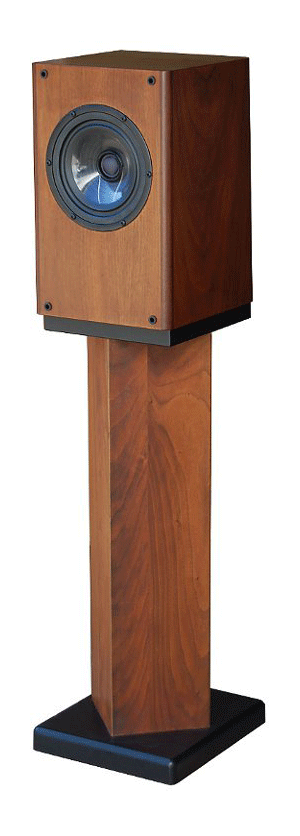
The crossover uses a metal oxide resistor, a film foil capacitor, and a perfect lay hexagonal wound inductor. Metal oxide resistors are carbon-free and have low thermal and contact (1/f) noise and high thermal stability. Perfect lay inductors have no hysteresis or saturation distortion, low skin and proximity effect losses, low resistance, and low self-inductance. They are wound, tied, and dipped in enamel: there is no nylon bobbin to increase the dielectric constant. Film foil capacitors have low intrinsic noise and excellent transparency. Even the wires connecting the drivers to the crossover are chosen for their sonic characteristics, stranded copper for the woofer, silver-plated copper for the tweeter.
The Sandbag stands are well made and beautifully finished and come in 24”, 27”, 30” and 32” heights. They are constructed of MDF and painted in satin black (also available in walnut veneer for an additional charge). The central support of the 27” version is 6” square, offset 45° relative to the top and bottom plates, and can be filled with sand to eliminate resonance and increase mass and stability. Thus the name “Sandbag Stands.” There are two round rubber pieces that seal the fill hole in top of the column to preclude leakage. The base plate takes four adjustable spikes (included). And there are also eight small squares of Plasti-Tak that firmly, and I mean firmly, adhere the speaker to the stands. The end result is attractive, massive and quite stable.
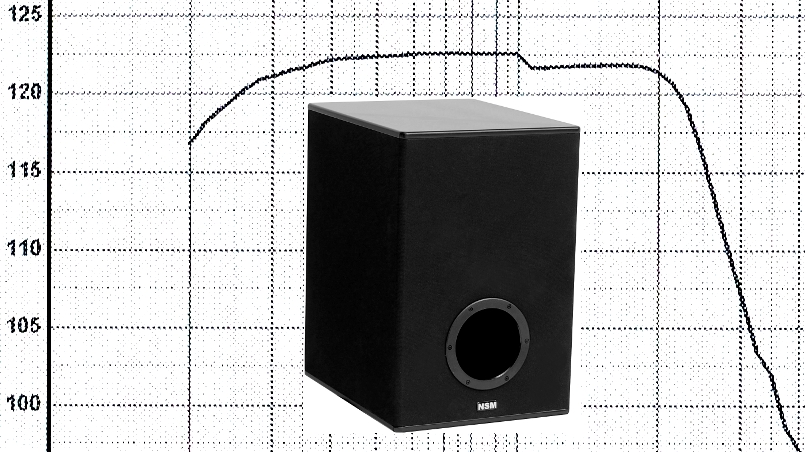
Subwoofer. The 15EXP has an internal 10” long-throw, doped paper cone driver, and an internal 200 watt “high headroom” class A/B amplifier that has thermal, overload and fuse protection. Considering the system’s limited bandwidth, 200 watts represents quite a lot of power. (The 15EXP “Special Edition” costs more, uses a more powerful, external amplifier, and has a remote control for volume and crossover point.) Each 15EXP weighs 45 pounds. The cabinet design is unusual. It is constructed of ¾” formaldehyde-free MDF; top and bottom painted in satin black; front, back and sides veneered in black cloth. The driver is mounted horizontally on an internal shelf (which also braces the cabinet)—so the rear of the driver sees a sealed cavity. The front of the driver sees a tuned-port cavity and the front-firing port is 4.625” in diameter to minimize “chuffing” at high sound pressures. The upper—acoustic suspension—half of this design provides a better transient response than any ported cabinet; while the lower—ported—half of the design provides a passive 12 dB/octave bandpass filter. Unlike most designs, the 15EXP is not dependent on digital signal processing and will perform very well without it. The illustration shows its response curve without any electronic processing—it is flat within a few decibels within its passband. This is remarkable performance.
The main function of the internal amplifier is to eliminate an additional load on the system amplifiers—I am aiming at a “flat” response and have the subwoofer volume set about 15° from zero gain. The 15EXP has had a long evolution beginning before DSP became commonplace, and this acoustical heritage accounts in part for its ease of system integration. It is not designed to rattle the windows (although it certainly has that capability); it is designed to provide an unobtrusive, integral and natural extension to the frequency range of the main loudspeakers, and it does this without dependence on DSP. Mr. Ricketts writes that, “Without the electronic contouring of the frequency response most active subwoofers would be unlistenable...the 15EXP subwoofer achieves exemplary, linear frequency response primarily through the natural and harmonious mating of its high quality driver and its sophisticated bandpass cabinet design.”
Controls on the rear include a power switch (signal-driven auto-on, indicated by a red LED changing to green), loudness, low-pass frequency (50-120Hz at 12dB/octave), and phase (0-180°). Combined with the cabinet this results in a maximum 24dB/octave slope. There are two sets of speaker-level inputs/outputs and two sets of line-level (RCA) inputs/outputs. The amplifier is capable of summing right and left channels, so it is possible to use a single 15EXP, taking advantage of the diminished ability of our ears to pinpoint sources at low frequencies. But audiophiles will want two subs: although we may not be able to precisely locate a 30Hz primary, the blending of harmonics by using a single subwoofer will produce inferior imaging.
Driver. The driver, the heart of the monitor, is a SEAS H1333: 7½” cast magnesium basket, 5” TPX (clear polypropylene) film cone, 39mm diameter voice coil, and a doped 26mm soft dome tweeter. Although I have seen this driver characterized repeatedly as a “co-axial” design, it is more accurately described as a “co-incident” design. The acoustic center of the woofer is identical to the acoustic center of the tweeter (more or less—read on). This configuration approximates a “point source,” the theoretical ideal my mentor taught me about when I was new to the game. To achieve this, the tweeter is mounted where the woofer voice coil dust cap would normally be. A typical coaxial design contains two drivers on the same axis, but not the same vertical plane; they are not time-aligned; phase distortions, cancellations, and reinforcements are inevitable. These can be imperfectly compensated for with an elaborate, high-order crossover, but doing so trades one set of problems for another.
The drivers in a coincident array, on the other hand, lie on the same vertical plane as well as the same horizontal axis: they are inherently time and phase-coherent. Coincident drivers do not require elaborate high-order crossovers and have identical directivity at the critical crossover frequency. Mr. Ricketts’ first-order crossover consists of the three components already mentioned. Unlike higher-order designs, first-order crossovers introduce no phase anomalies or group delay.
I stated that the acoustical centers of the two driver elements are “identical”—this may be less than accurate in practice. The tweeter’s voice coil linear range of motion is 0.5mm, whereas the woofers are 6mm. The tweeter is mounted to the pole piece of the woofer magnet structure, it does not move “with” the woofer voice coil. Even if at rest their acoustical centers are identical, when driven they move independently. John Stone of SEAS USA wrote to me that, “The tweeter is completely independent, physically, magnetically and electrically from the woofer. It has its own neo[dymium] magnet system. It is very compact and the motor system is isolated from outside magnetic influence.The tweeter module is also field replaceable.”
The SEAS datasheet states that “The cone of the woofer acts as a horn loading for the tweeter, and the chassis of the dome unit represents the throat of this horn.” The acoustical relationship between a moving tweeter dome and a loading horn that’s moving independently of the dome is complex. There is a doppler shift, so at a given frequency the tweeter may also produce frequencies slightly higher and slightly lower. Add to that the different frequency ranges of the two drivers and you get a physical relationship in which absolute coincidence happens but is not continuous. Moreover, the greater excursion of the woofer voice coil constantly alters the acoustical environment presented by the tweeter “horn”. As a practical matter, all this may be without audible consequence. Mr. Ricketts notes, “Theoretically it should cause some Doppler effects at higher volume but in practice it is not noticeable…” To be sure, however, if a designer’s aim is to approach a point source, even a less-than-perfect coincident array is a big improvement over multiple drivers on different axes (and, often enough, on different vertical planes).
Design Issue. There are a number of different ways to design and build a loudspeaker. Each has pros and cons. You might almost say that at root, the loudspeaker designer’s choices stem from a philosophical underpinning. And since I’ve always had an interest in the why’s and wherewithal’s of audio design and execution, I’ve my share of philosophical underpinnings too. Simplicity is high on the list; using high quality, high linearity drivers rather than relying on elaborate crossovers. But there are dozens of parameters and relationships to be considered in deciding on drivers and crossovers and baffles. There is no “best” way to design a loudspeaker, and no matter what choices are made, there are always tradeoffs. SEAS makes another coincident driver, the H1602, that uses an aluminum cone, which some designers prefer over paper or polypropylene. Its on-axis response curve is as smooth as the H1333 up to about 1100Hz; after that, it becomes extremely non-linear. Using this driver instead of the H1333 would have necessitated a higher-order crossover at a lower frequency, thus a narrower passband, greater low-frequency demands on the tweeter, more potential phase issues, and more difficulty getting a smooth match with the tweeter. Make no mistake, it can be done; it’s just a different approach. My KEF101’s had monstrously complex fourth-order crossovers with iron-core inductors, yet they were among the most neutral loudspeakers of my experience, comparable to the classic BBC LS3/5a.
The sound. It is anecdotal that music from another room can be very convincing. I always assumed that this had more to do with the casual nature of listening while otherwise engaged than with the actual quality of sound originating from two rooms away, though the experience is uncanny. But in a web article on the design of loudspeakers, Siegfried Linkwitz writes that “…the uniformity and flatness of the off-axis frequency response which we hear via room reverberation and reflections is rarely a design goal. You can check the naturalness of the timbre by listening from another room. Does it sound like a loudspeaker is playing?” In the case of the NSMT 20M, the answer is an unequivocal, ”No”—it sounds like live music. Maintaining a flat, smooth off-axis response is precisely one of Mr. Ricketts’ stated design goals. From a practical standpoint, how a loudspeaker sounds from another room is of real importance. If all loudspeakers did it equally well, mentioning it would be trivial. If all of us listened to music only when we’re sitting in the sweet spot, mentioning it would be trivial. But neither of these is the case. The little 20Ms do it as well as, or better than, my 75” tall Newform R645s. The 20Ms can fill the house with music of extraordinary fidelity and dynamics. The sense of a real instrument or a real singer out in the living room can occasionally be disarming.
The 20Ms are wonderfully clear and fast transducers with bass performance that belies their relatively small size. They can play very loud without distortion or loss of clarity. I’ve played music from Mozart to Clapton, from Cassandra Wilson to Clifford Jordan, from symphonies to sopranos, and it has all sounded great. Of course, the low fundamentals are hardly there and a pipe organ recording with lots of 16′ and 32′ stops will be found seriously wanting. Most music will not. And if I were to rate the loudspeaker characteristics I value most, the bass extension would be below transparency, neutrality, imaging, clarity—qualities at which the 20Ms excel.
Mozart, Die Zauberflöte, Sir Georg Solti, Weiner Philharmoniker (London 444 210-2). Mozart’s last opera, first performed at Emanuel Schikenaeder’s Theater an der Wien a few months before the composer’s death (the musicologists think from rheumatic fever). As a matter of fact, the only operas I own, the only operas I listen to, are Mozart’s. And among these The Magic Flute is unique, being Masonic (as was Mozart), its plot centered around a spiritual quest. But it is the opposite of somber—it is brimming with delight and contains perhaps the most enchanting aria Mozart wrote (Der Hölle Rache kocht…). A couple of details really caught my attention. The 20M reproduces the celesta in this recording with beauty and solidity that surprised me. I’ve heard this CD countless times. Of course, I know what this particular celesta on this particular recording sounds like. But the 20M provides a more palpable and nuanced celesta, one with the harmonics and resonances of an actual, present-in-the-room instrument. Another instrument that stood out in this listening session was the tympani. I simply didn’t know, couldn’t have imagined: the rich overtones and transients of a real kettle drum (and this without the subwoofers). I’d never heard the like. So complete was the transient and harmonic information, that without concentration or effort I literally “saw” the drum in a precise location with palpable dimension. It was remarkable how real it seemed.
Subwoofers. At this point in time, I decided to install and break in the subwoofers. I ran into a hookup snag because I couldn’t locate a needed Y-splitter for my bi-amplified speaker cables. After repeated phone calls to parts houses, I finally gave up the quest and requested a couple of jumpers from Mr. Ricketts. They were here within a few days.
I adjusted the subwoofer amplifier volume by ear, as I said, aiming at a flat response, erring on the side of unobtrusiveness. I tried the crossover setting at several positions and left it at around 65Hz, where it seems to integrate well. The truth is I hadn’t the patience to mess about with these details now: I wanted to play music, I was about to hear my first full-range loudspeaker system, ever. I promised myself I would go back later and adjust the phase, then recheck to volume and the crossover point.
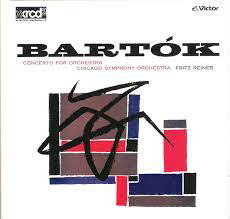 The comment I made about the 15EXP—that it provides a ‘natural extension’ to the bass range, that it integrates well with the main loudspeakers without calling attention to itself—was based on theory and design and hearsay: these did not prepare me for the real thing. And the real thing can be described in a single word: foundation. The sound without subwoofers seems lacking in substance in retrospect, a bit thin and rickety, a house built on not-quite-substantial land. If this far-flung metaphor suggests a subjective, qualitative change in my experience of the music with subwoofers, that’s just what it ought to suggest. “More bass extension” hardly seems an adequate description; “greater reality” may be hyperbolic, but is emotionally accurate. My first words after listening for a few minutes to Bartok’s Concerto for Orchestra (Fritz Reiner conducting the Chicago Symphony Orchestra, JVC XRCD JMCXR-0007): “I had absolutely no idea what I’ve been missing all these years.” From a purely objective standpoint, in terms of measured response, the difference may not be all that great—essentially an additional octave. True, a very well-behaved additional octave, a very flat and uncolored additional octave. But from an aesthetic standpoint, the change is phenomenal.
The comment I made about the 15EXP—that it provides a ‘natural extension’ to the bass range, that it integrates well with the main loudspeakers without calling attention to itself—was based on theory and design and hearsay: these did not prepare me for the real thing. And the real thing can be described in a single word: foundation. The sound without subwoofers seems lacking in substance in retrospect, a bit thin and rickety, a house built on not-quite-substantial land. If this far-flung metaphor suggests a subjective, qualitative change in my experience of the music with subwoofers, that’s just what it ought to suggest. “More bass extension” hardly seems an adequate description; “greater reality” may be hyperbolic, but is emotionally accurate. My first words after listening for a few minutes to Bartok’s Concerto for Orchestra (Fritz Reiner conducting the Chicago Symphony Orchestra, JVC XRCD JMCXR-0007): “I had absolutely no idea what I’ve been missing all these years.” From a purely objective standpoint, in terms of measured response, the difference may not be all that great—essentially an additional octave. True, a very well-behaved additional octave, a very flat and uncolored additional octave. But from an aesthetic standpoint, the change is phenomenal.
To test my impressions I played the first couple of minutes of the Bartok Concerto with the subwoofers switched on, and then I played them again with the subwoofers switched off, each time jumping into the sweet spot and closing my eyes. I did this several times. Here and there a specific absence of bass was notable, which is to be expected when the fundamental is rolled off; not a big deal in itself. But more importantly, there was a distinct, continual sense of something missing with the subwoofer turned off, an absence…a lack of foundation: someone had watered the cat’s milk. Although the 20Ms sound good by themselves and, as I said, do a remarkably good job of reproducing bass, I think the 20Ms, or any limited-range loudspeaker, will sound lacking in comparison to a good full-range loudspeaker such as the Armada System. The absence of “foundation” saps an important quality from the musical experience. It was a sonic revelation.
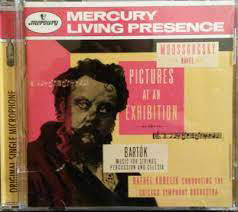 Mussorgsky, Pictures at an Exhibition, Rafael Kebilik, Chicago Symphony Orchestra (Mercury Living Presence 434 378-2). This recording was made in 1951 using a single Telefunken U47 microphone and it remains to this day a singular example of the recording engineer’s art. I am sitting here shaking my head in near-disbelief at how clear and dynamic it sounds through the NSMTs, how solid the bass is, how detailed the orchestral texture. In many ways, it rivals or surpasses anything in my collection. In terms of sheer visceral excitement, I know of few equals. Maybe the Tchaikovsky 1812 in XRCD format. I sometimes play Pictures for visitors and then spring on them the remarkable fact that it’s a 60-year-old recording. Pictures were originally written for pianoforte and were orchestrated by Ravel. Orchestrations can sometimes digress far afield from the composer’s intention, but I’ve always felt Ravel succeeded brilliantly. And this is the best orchestral version I know of.
Mussorgsky, Pictures at an Exhibition, Rafael Kebilik, Chicago Symphony Orchestra (Mercury Living Presence 434 378-2). This recording was made in 1951 using a single Telefunken U47 microphone and it remains to this day a singular example of the recording engineer’s art. I am sitting here shaking my head in near-disbelief at how clear and dynamic it sounds through the NSMTs, how solid the bass is, how detailed the orchestral texture. In many ways, it rivals or surpasses anything in my collection. In terms of sheer visceral excitement, I know of few equals. Maybe the Tchaikovsky 1812 in XRCD format. I sometimes play Pictures for visitors and then spring on them the remarkable fact that it’s a 60-year-old recording. Pictures were originally written for pianoforte and were orchestrated by Ravel. Orchestrations can sometimes digress far afield from the composer’s intention, but I’ve always felt Ravel succeeded brilliantly. And this is the best orchestral version I know of.
I next turned to an organ recording J.S. Bach “Toccata and Fugue,” Lionel Rogg, (Harmonia Mundi 190771) and played Bach’s Passacaglia and Fugue. This early work is, without doubt, one of the supreme masterpieces for that instrument; it is the product of a young Bach exalting in his genius, less introspective, and more exuberant. The variations constituting the passacaglia have haunted me over life in music with their grandeur, power, and astonishing inventiveness. This is where I first learned to love the pipe organ. The nuances that are in the recording, the reverberation of the venue, the valve action of the pipes, the mechanical noise of the pedals, the chirp of the air column as it first enters the pipes, are not just present, they are specific in focus and dynamic value. You might say it is not just a matter of “hearing” these things, but also a matter of “seeing” them. The realism of the instrument is, as might be expected, extraordinary due to the full frequency range of the loudspeaker. An acquaintance who has heard and appreciated the many changes in my stereo over the past decade—cables, amplifiers, power cords, DACs, line filters—was present for the first few minutes of the passacaglia and left a phone message later on: “Those speakers are the closest thing I’ve ever heard in my life to the real thing…incredible.” I agree, the Armada System is extraordinary and in a class, one might not anticipate based on its relatively modest cost. It certainly presents by far the most realistic and the most exciting music ever to grace our living room. Even my wife, who has always found pipe organ music objectionable, was drawn into the living room: not to complain but to tell me how much she enjoyed it. Hearing this CD—from the deep grumble of the big diapasons to the plangent call of the bourdons to the crystalline lilt of the flûtes—was a marvelous experience.
Cassandra Wilson, Blue Light ‘Til Dawn (Blue Note CDP 0777 7 81357 2 2). This is a dream CD, superb sound, superb musicianship, superb soloist, great songs. Granted, I’m a jazz lover in a small way only, but when I hear Ms. Wilson’s rich, wise voice in this performance, time and circumstance fall from me like an old skin, and the world fills with a graceful radiance. Maybe I should abandon my Beethoven and my Brahms and Sibelius more often for a non-contemplative world where timelessness is measured in the phrasing of a beautiful woman’s haunting voice singing Children of the Night. This is one of a handful of CDs I use to test component performance, and what it reveals about the Armada System is unmistakable. Stunning as this CD is with my old ribbons, it is more magical with the Armada System. The bass is tight and clean without a bit of overhang, the cabinets stone dead, the treble sparkles without a hint of distortion or ringing, and the midrange is full and rich and real as sunshine on your skin. At these rarefied levels of sound reproduction, metaphors pale and scamper before the unalloyed pleasure of the evocation—and in the back of my mind, appreciation of the wires and integrated circuits and brilliant designers that bring this experience about.
The truth. When one speaks of the sonic qualities of a loudspeaker, one is primarily speaking of its truthfulness to the media. But what does “truthfulness to the media” really mean? The pat answer is that it means a (relatively) precise representation of the original data, be it grooves in vinyl or pits in polycarbonate, no more, no less.
Far as I know there’s no single measurement called “resolution.” We all know how changing a component sometimes reveals a piccolo previously buried in the bassoons and horns, and how different components seem more or less transparent relative to one another. Is it the type of capacitors in the signal path, is it the construction of the loudspeaker cables, is it the modulus of the speaker cone material, the design of the output stage? Is it all of these and much, much more? I have no answers. But there is a clue to resolution, one that has cropped up in various reviews, including some of my own: good recordings sound better, poor recordings sound worse. And if there’s treasure buried deep in an otherwise mediocre recording, it’ll shine through. The component that further distinguishes such boundaries could be said to be less “forgiving,” to be more accurate, more truthful. Truthfulness to the source is no guarantee of “musicality,” alas, but it is the holy grail of our hobby. Although I can recall reading naïve comments to the effect that a component or a loudspeaker was “too revealing,” for a dyed-in-the-wool music lover and part-time audiophile like myself, there can be no such thing. Good whiskey ought to be drunk straight.
The NSMT 20M is a highly evolved design that from the beginning seems to have aimed at “truthfulness to the source” and this has been my experience precisely. If I was unprepared for any one thing, it is the degree of contrast between good and poor recordings. This is a loudspeaker for someone who really wants to hear what’s on the medium. No wonder sound engineer Kurt Lundvall wrote, “I purchased a complete 20M Armada system over a year ago which I use daily for audio mastering. This system has simply allowed me to get closer to creating a perfectly balanced master than I ever thought possible.”
And talk about the volume control being like the focus on a camera—with the 20Ms there is an unprecedented degree of precision in balance and image focus. A remarkable example of this is Wanda Landowska’s Well-Tempered Clavier, Book 1 (RCA 6217-2-RC), where the correct loudness setting snaps the monaural “image” into proper focus and dimension. The Pleyel is perhaps my least favorite harpsichord, but this recording of music I have loved deeply for a very long time, played by its supreme interpreter, has clearly taken on a more natural and balanced tone. The “Pleyel sound” through the NSMTs is significantly less strident and more pleasant to listen to. It is both interesting—that a more neutral, perhaps more accurate, loudspeaker would account for the tonal change; and rewarding—that I can spend a more amicable time with these particular CDs which I treasure.
The 20Ms are noteworthy for their effortless sense of élan and how completely they disappear while making beautiful music. I keep harping on those words “neutrality” and “accuracy.” If there is such a thing as the “British sound,” these two words are the twin pole stars in its firmament. Long experience with KEF 101s—speakers that exemplify the British tradition—proved to me the enduring and endearing value of those qualities. The NSMT 20Ms have those qualities too, a lot of class, a truthful portal to the spiritual, sensual, emotional, exuberant, and universal language that music is.
So much so, I purchased the 20Ms and look forward to using them as my new reference.


Russell Lichter
Specifications: 20M Ambient Sound Monitor
Dimensions :14 X 9 X 10
Driver array: 7 inch cast frame TPX cone with one inch soft Dome tweeter
Grill: yes
Inductor: air core
Capacitor type: Film foil
Bi-wireable
Cabinet: eco-friendly
(sealed against emissions)
Cabinet finish: walnut veneer and Peruvian walnut
Price: 20M Ambient Sound Monitor is $2995/pair
Specifications: 15EXP Subwoofer:
200 watts high headroom amplifier. Continuous phase adjustment for the best possible integration with your speaker system
:10 inch long-throw paper cone woofer
: Auto-on switch controlled by input signal
: Continuously variable active crossover switch from 40 Hz to 120 Hz
: Combined bandpass enclosure and crossover roll off 24dB/octave
: Line level and speaker level inputs
: Line level and speaker level outputs
: Vented band pass design produces extended flat bass response which is ideal for music and home theater systems
: Front port allows near wall placement
Price: 15EXP subwoofer is $1295
Price: 27” Sandbag Stands are $795/pair, all prices include Free Shipping within the continental USA.
Address: NSMT is located in Research Triangle Park, North Carolina, phone 919-244-8777
Website: www.nsmt-loudspeakers.com
Email nsmt@nsmt-loudspeakers.com.
Stereo Times Masthead
Publisher/Founder
Clement Perry
Editor
Dave Thomas
Senior Editors
Frank Alles, Mike Girardi, Key Kim, Russell Lichter, Terry London, Moreno Mitchell, Paul Szabady, Bill Wells, Mike Wright, Stephen Yan, and Rob Dockery
Current Contributors
David Abramson, Tim Barrall, Dave Allison, Ron Cook, Lewis Dardick, Dan Secula, Don Shaulis, Greg Simmons, Eric Teh, Greg Voth, Richard Willie, Ed Van Winkle, and Rob Dockery
Music Reviewers:
Carlos Sanchez, John Jonczyk, John Sprung and Russell Lichter
Site Management Clement Perry
Ad Designer: Martin Perry


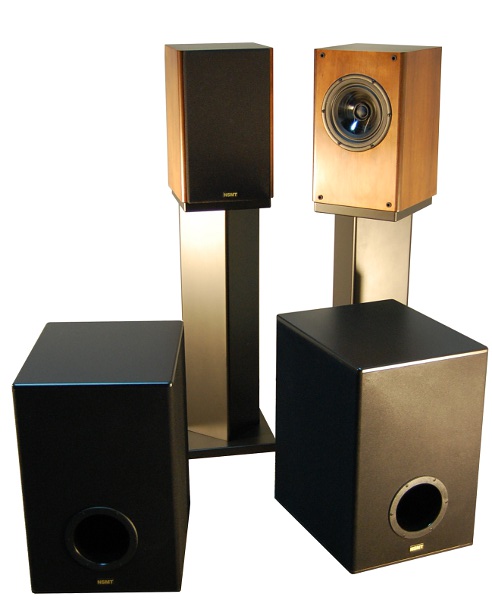



Be the first to comment on: NSMT Armada System: 20M Monitors, Sandbag Stands, 15EXP Subwoofers